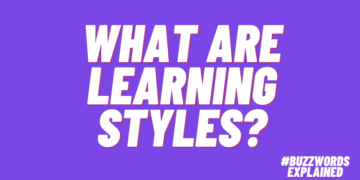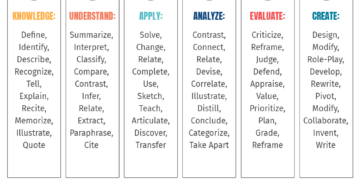Identify The Competencies, Iterate, And Roll Out
Innovation is novelty that creates value for customers and stakeholders. While more than 80% of executives surveyed by McKinsey in 2021 said that innovation was one of their three key priorities, only 10% are content with their team innovation efforts. If innovation is ubiquitous, why is it so difficult to achieve and sustain? This series of “Innovation Blueprint” articles will explore critical elements of cultivating an innovation ecosystem, including measuring and scaling innovation for your organization. This article centers on the value of innovation competency models and offers a starter path on building such a competency model and which competencies to consider including for your organization.
Innovation Competency Models
According to the Society of Human Resource Management (SHRM), competency models are foundational for talent development, retention, and management. Competency models capture, codify, and curate the skills and behaviors needed to succeed in a particular area or discipline. There are several types of competency models, including custom organizational competency models, that delineate the competencies required for every employee in the organization to develop. Function-focused competency models focus on specific skills related to a particular position, for example, sales or finance. Role-based competency models capture the skills needed for a specific role, such as Chief Learning Officer or call center manager.
An innovation competency model captures the knowledge, skills, behaviors, and personality characteristics of innovators in an organization. To demonstrate innovation competence, an innovator must master a set of competencies. Over the past decade, several scholars, including Mortara and Du Chatenier, have defined innovation competencies in an academic environment as introspective, extrospective, interactive, and technical. [1] These competencies include skills such as understanding the fit with internal and external strategies and innovation opportunities, building networks, evaluating risk, negotiating, and managing a team, among others.
Organizations lacking an innovation competency model cannot effectively measure and close the innovation skills gap for their employees and ultimately face challenges piloting and scaling innovation efforts. According to SHRM, building a competency model from scratch requires several steps, including defining job roles, interviewing Subject Matter Experts to distill role competencies, identifying high-performer behaviors, and compiling, reviewing, and vetting the competency model. [2]
Innovation Competencies
This article focuses on 7 practical and actionable competencies employees need to learn, practice, and problem-solve on the job using innovation. The following innovation competencies have been gleaned from The Innovator’s DNA by Christiansen, Gregersen, and Dyer; The Innovator’s Way by Peter Denning and Robert Dunham; and the author’s research at the United States Department of Defense.
1. Observing
Keenly following the process from the user’s perspective. Deliberately outsmarting own cognitive biases during observation. Opening your mind to seeing things differently. Seeking to examine known products and services closely without judgment. Observing with all your senses. Identifying challenges users experience when engaging with products or services. Breaking down whole systems or structures into smaller parts to pinpoint process bottlenecks.
2. Associating
Exploring solutions outside the organization. Seeking ideas to solve problems in other industries or examples. Benchmarking with other best practice organizations inside and outside the organizational sector and industry. Exploring new associations. Generating metaphors. Building a team curiosity box with odd and engaging toys, books, and knick-knacks. Seeking to uncover next practices where best practices are lacking. Connecting the dots across seemingly disparate patterns.
3. Questioning
Asking open-ended questions. Practicing active listening. Asking questions from various perspectives, including the user, the process, and the industry. Asking “how might we,” “why,” “what if,” and “what caused” questions. Sparking curiosity by asking new questions about old problems. Tracking the question and answer ratio in the organization. Learning design thinking practices.
4. Networking
Engaging with diverse people and experiences inside and outside the organization. Seeking to develop strategic networks beyond personal and operational networks. Building coalitions. Cultivating online and in-person learning experiences to engage with others inside and outside the organization. Attend at least two conferences per year. Begin a community. Cross-train with experts.
5. Experimenting
Practicing empathy to capture the user experience. Cultivating creative thinking. Testing new ideas and approaches. Embracing failure. Developing a growth mindset. Building grit and resilience. Sharpening agility to experiment faster. Managing polarities to address complicated challenges. Traveling within and outside the country. Building prototypes. Going trend spotting. Designing and developing pilots to explore new ideas in low-risk, minimum resources settings. Communicating experiment results, including wins and failures. Mitigating risk. Managing expectations in the immediate and short term. Level-setting expectations.
6. Sustaining
Staying focused during the long and often arduous journey of innovation. Playing the long game. Building commitment and accountability in innovation teams and leaders. Communicating results and trajectory of the innovation journey. Defining goals and working daily to achieve the goal. Practicing patience. Preceding instant gratification. Embracing lifelong learning. Managing expectations for the long run. Discouraging teams from reverting to old ways. Integrating innovation into the organization. Anticipating and managing opposing perspectives.
7. Leading
Championing innovation for the long run. Communicating with transparency. Building trust. Engaging stakeholders with new narratives for the future. Inviting diverse voices to engage. Empowering and inspiring teams to continue to innovate. Rewarding wins and good failures. Protecting your mavericks. Seeking opportunities to produce value. Embracing lifelong learning and encouraging teams to do the same. Fostering a culture of innovation. Driving culture change. Leading in crisis.
Once you and your team distill the competencies and related behaviors that resonate the most with the innovation culture in your organization, you will need to identify the skills associated with each desired behavior and the learning opportunities to address each skill. Finally, you will need to test the model by running a short pilot. This will allow you to tweak critical elements before rolling them out to the whole organization.
Conclusion
To foster a culture and an innovation ecosystem, organizations must provide their employees with the knowledge, skills, motivators, and infrastructure. An innovation competency model captures, codifies, and curates the knowledge and skills employees need to learn, practice, and scale innovation at their organization. Without a competency model, an organization cannot measure and ultimately manage the innovation skills gap in the organization, which is a significant hurdle to innovation growth and scale efforts.
References:
[1] Developing a competency model for open innovation: From the individual to the organisational level
[2] Competency Modeling Meets Talent Management




















